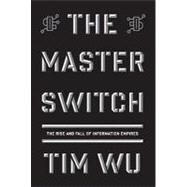
| Introduction | p. 3 |
| The Rise | p. 15 |
| The Disruptive Founder | p. 17 |
| Radio Dreams | p. 33 |
| Mr. Vail Is a Big Man | p. 45 |
| The Time Is Not Ripe for Feature Films | p. 61 |
| Centralize All Radio Activities | p. 74 |
| The Paramount Ideal | p. 86 |
| Beneath the All-Seeing Eye | p. 99 |
| The Foreign Attachment | p. 101 |
| The Legion of Decency | p. 115 |
| FM Radio | p. 125 |
| We Now Add Sight to Sound | p. 136 |
| The Rebels, the Challengers, and the Fall | p. 157 |
| The Right Kind of Breakup | p. 159 |
| The Radicalism of the Internet Revolution | p. 168 |
| Nixon's Cable | p. 176 |
| Broken Bell | p. 187 |
| Esperanto for Machines | p. 196 |
| Reborn Without a Soul | p. 205 |
| Turner Does Television | p. 207 |
| Mass Production of the Spirit | p. 217 |
| The Return of AT&T | p. 238 |
| The Internet Against Everyone | p. 255 |
| A Surprising Wreck | p. 257 |
| Father and Son | p. 269 |
| The Separations Principle | p. 299 |
| Acknowledgments | p. 321 |
| Notes | p. 323 |
| Index | p. 355 |
| Table of Contents provided by Ingram. All Rights Reserved. |
The New copy of this book will include any supplemental materials advertised. Please check the title of the book to determine if it should include any access cards, study guides, lab manuals, CDs, etc.
The Used, Rental and eBook copies of this book are not guaranteed to include any supplemental materials. Typically, only the book itself is included. This is true even if the title states it includes any access cards, study guides, lab manuals, CDs, etc.